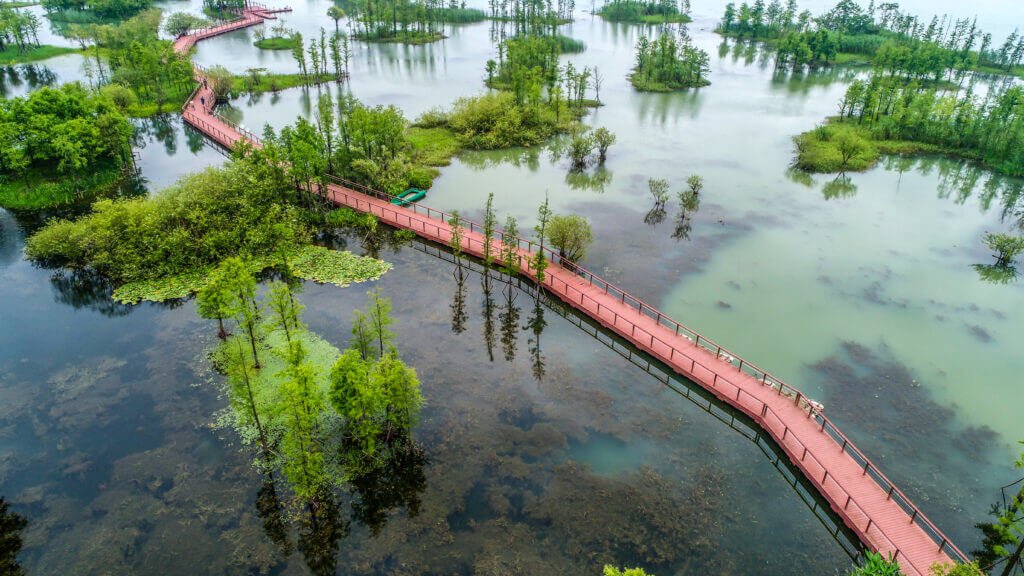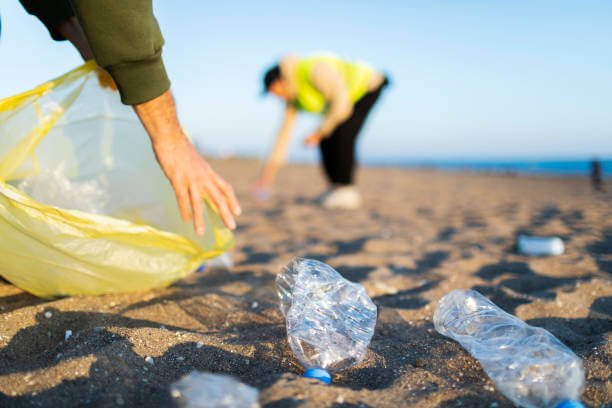Waterlogging : Causes, Effects, and Solution
Waterlogging means the clogging of excess water in the soil. When it happens, it makes it difficult for the plants to absorb the essential nutrients from the soil. They also find it difficult to absorb the oxygen they need to grow. It can be caused by different kinds of conditions like heavy rainfall, improper drainage system, and high-water table levels. If the waterlogging is not treated, it might bring serious consequences for the growth and survival of plants. The overall ecosystem can be disturbed. As you have landed here, we will discuss the causes, effects, and solutions to waterlogging, providing you with a better understanding of this phenomenon and how to prevent it.
What Is Waterlogging?
Waterlogging is a condition that occurs when soil becomes saturated with water, either from excessive rainfall or poor drainage. When the soil is saturated, it becomes difficult for air to penetrate, which in turn makes it difficult for plant roots to absorb the oxygen they need to survive. This lack of oxygen can lead to the death of plant roots, which in turn affects plant growth and productivity. Additionally, waterlogging can result in the build-up of harmful chemicals and pollutants in the soil, which can have negative effects on both plants and the environment. Overall, waterlogging is a serious issue that can have far-reaching consequences for ecosystems and agriculture.
What Are the Causes of Waterlogging?
Waterlogging can be caused by a variety of factors, including natural and man-made factors. Here are some of the common causes of waterlogging
Heavy rainfall
Heavy rainfall is one of the main causes of waterlogging. When there is excessive rainfall, the soil gets filled with excess water. The excess water cannot drain away, resulting in waterlogging. This can lead to soil erosion, reduced soil fertility, and increased risks of flooding.
Poor soil structure
Soil with poor structure, such as heavy clay soil, can be prone to waterlogging as it doesn’t allow for proper water drainage. When the soil has a high clay content, it becomes compacted, making it difficult for water to pass through. This can lead to waterlogging and other related problems.
High water table
A high water table is another common cause of waterlogging. When the water table is close to the surface, it can prevent water from draining away from the soil. This can cause water to collect on the surface and result in waterlogging.
Poor drainage
If the land doesn’t have proper drainage systems, excess water will accumulate and result in waterlogging. This can occur in areas where the land is flat, and there are no natural drainage channels. Poor drainage can also be caused by human activities, such as the construction of buildings or roads that alter the natural drainage system.
Compaction of soil
Soil compaction can reduce the space between soil particles, resulting in poor drainage and waterlogging. Soil compaction can occur due to the use of heavy machinery or foot traffic, leading to soil compaction and poor water infiltration.
Irrigation
Over-irrigation of crops can lead to waterlogging by saturating the soil with too much water. Irrigation systems must be designed and managed to ensure that the soil is not overwatered, leading to waterlogging.
Human activities
Human activities, such as the construction of buildings, roads, and other infrastructure, can alter the natural drainage system of an area, leading to waterlogging. When natural drainage channels are blocked or filled, water cannot drain away, and waterlogging can occur. This can have severe consequences, such as flooding, soil erosion, and damage to crops.
These factors can act alone or in combination to cause waterlogging, and the severity of the issue depends on the intensity and duration of the factors.

What Are the Effects of Waterlogging?
Waterlogging can have a range of negative effects on plants, ecosystems, and the environment. Here are some of the common effects of waterlogging:
Reduced plant growth and yield
Waterlogging can have a serious impact on plant growth and yield. When the soil is overfilled with water, roots are unable to access the necessary nutrients they need to grow. As a result, plants can become stunted and produce fewer flowers, fruits, or seeds. Additionally, waterlogged soil is often cool and lacks nutrients, which can further impede plant growth.
Plant stress
Waterlogging causes stress to plants, and makes them more vulnerable to diseases and pests. The stress can weaken the plant’s defense mechanism, allowing pests and diseases to attack more easily. Also, waterlogged soil can promote the growth of harmful microorganisms that can further damage plant health.
Soil degradation
Waterlogging can lead to soil degradation by altering the soil structure and reducing its ability to support plant growth. When soil is waterlogged, it becomes compacted and can lose its structure, making it difficult for plant roots to penetrate. Over time, this can lead to soil erosion and a decrease in soil quality.
Nutrient leaching
Waterlogging can cause nutrients to leach from the soil which results in reducing soil fertility. When the soil is saturated, nutrients flow easily and can be washed away from the roots of the plants. Nutrient leaching leads to deficiencies in the plants that harm their growth.
Increased greenhouse gas emissions
Waterlogging leads to problems like an increase in greenhouse emissions that includes many harmful gases like carbon dioxide and methane in the soil. When the soil is waterlogged, anaerobic conditions can develop that increase the growth of microorganisms that produce greenhouse gases. This can have negative impacts on the environment and contribute to climate change.
Reduced biodiversity
Waterlogging can reduce biodiversity by limiting the species found in the affected area. Waterlogging leads to inhospitable conditions for many flora and fauna. It impacts the functioning of the ecosystem.
In conclusion, waterlogging is a serious issue that can have far-reaching consequences for plants, ecosystems, and the environment. It is important to understand the causes and effects of waterlogging and employ appropriate solutions to mitigate its impacts and maintain healthy, productive landscapes
What Is the Solution to Waterlogging
Waterlogging can be a challenging issue to address, but several solutions can be employed to mitigate its effects. Here are some common solutions to waterlogging:
Improve drainage
Installing drainage systems such as ditches, drains, and culverts can effectively remove excess water from the soil. This is particularly effective in areas with heavy rainfall or a high water table. Drainage systems should be designed and installed by professionals to ensure proper water flow and avoid further environmental degradation.
Use raised beds
Raising beds is a way to grow crops above the ground where there is waterlogged soil. This process allows the plant to grow in its place and access nutrients and oxygen according to their need. Raised beds are constructed with the help of organic matter like compost that improves the drainage system of crops. This method is commonly used to grow vegetables and other small crops.
Crop rotation
Crop rotation helps to manage to waterlog. Alternating crops that are suitable for wet conditions compared to those that are not well suited is done in crop rotation. The tolerance of crops helps in less wastage and helps farmers survive the logging
Soil amendments
Adding organic matter like compost can improve soil productivity and stability. They should get more fertile which leads to better health of the crops. Other soil amendments such as lime, gypsum, or sand can also be used to improve the drainage of the soil.
Avoid over-irrigation
Over-irrigation leads to waterlogging therefore we must avoid putting too much water on crops. can lead to waterlogging, so it is important to avoid applying too much water to crops. The systems that are used for irrigation should be designed and managed carefully. Alternative methods like drip irrigation or subsurface irrigation can also be effective at reducing the risk of waterlogging.
Plant water-tolerant crops
Planting crops that are more tolerant of wet conditions, such as rice or cattails, can help to reduce the effects of waterlogging. These kinds of crops are used in wet environments and therefore they can survive waterlogging easily. Wheat and corn are the kind of crops that does not suffer waterlogging and should be avoided
Implement sustainable land management practices
Sustainable land management practices, like the technique of conservation tillage and agroforestry, can help to improve soil health and prevent waterlogging. Conservation tillage reduces soil disturbance during planting and cultivation. This can improve the structure of the soil. Agroforestry on the other hand is the process to integrate trees and crops on the same piece of land. This reduced the chances of should erosion and in turn improves the health of the soil.
Improve soil aeration
Aerating of the soil improves the hold of the waterlogging capacity of the soil. It helps in reducing the risk of waterlogging. By tilling the soil, adding organic matter, and using particularised tools like aeration machines. Soil Aeration improves the fertility of the soil and decreases the danger of soil compaction.







